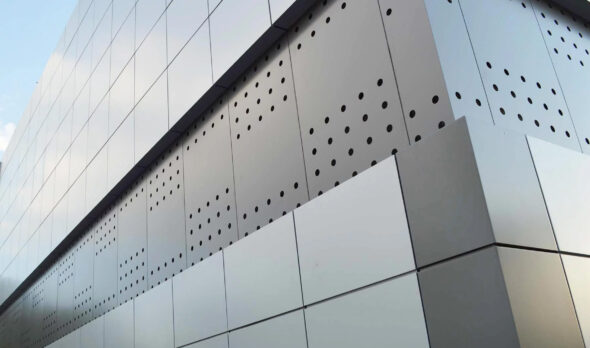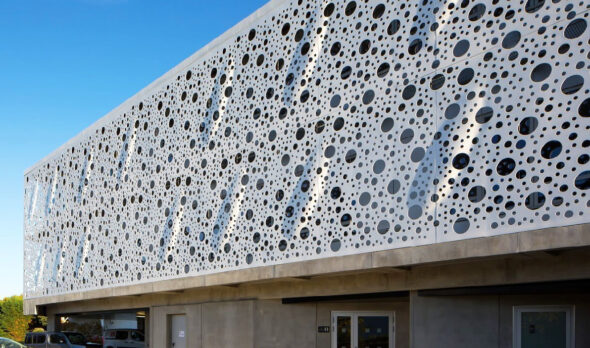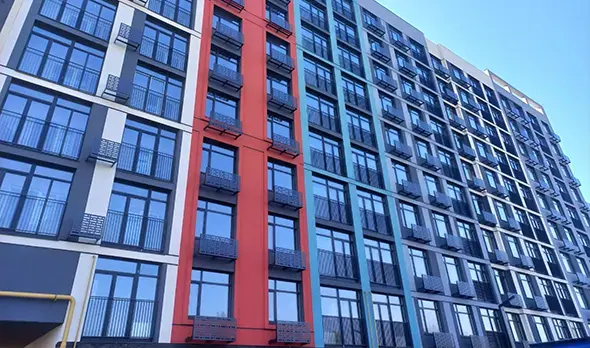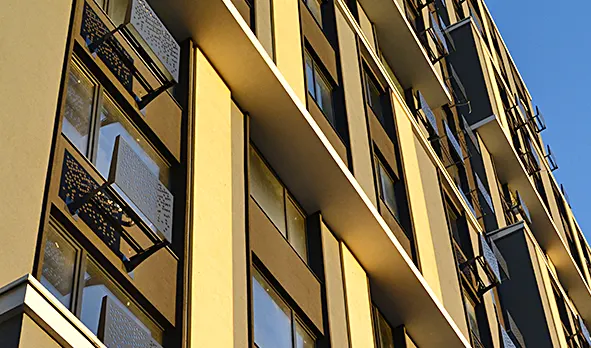

Brackets NVF-SPOK, Brackets for Air Conditioners
Partners


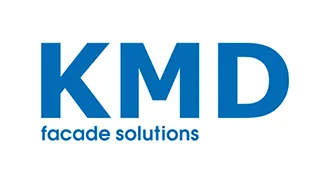
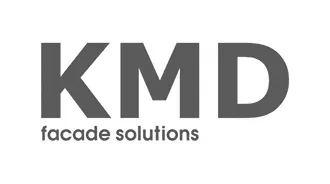


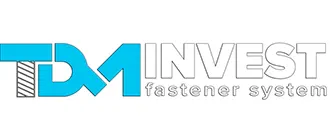
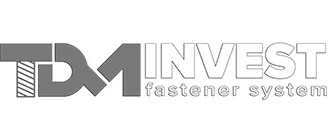
Ventilated Facade
The ventilated facade is a modern and efficient system for finishing the exterior surfaces of buildings, structures, and constructions, consisting of a subsystem of brackets and profiles and cladding panels. The ventilated facade is also called a “breathing” facade due to the ventilation gap between the decor and the wall, where air circulation occurs, removing condensate from the system. The frame elements can be made of aluminum, galvanized steel, or stainless steel, with aluminum being the most common. Various materials can be used for cladding, from ceramic to steel, and from composite to polymer materials. Particularly popular are polymer materials, especially High-Pressure Laminate (HPL) and aluminum composite panels (ACP). Ventilated facades are in high demand in the construction industry, combining aesthetics, functionality, protection, and energy efficiency.
Modern ventilated facades have advantages compared to other types of facades. Let’s consider some of them:
- Thermal Insulation: The ventilated layer ensures natural air circulation, reducing heat loss in winter and preventing overheating in summer, thus lowering heating and cooling costs.
- Sound Insulation: The air channel significantly improves the building’s sound insulation characteristics, which is particularly relevant for buildings located in noisy areas.
- Protection of Walls from Atmospheric Influences: The ventilated facade protects walls from precipitation, temperature fluctuations, and UV radiation.
- Decorative Function: Ventilated facades allow buildings to have a modern and attractive appearance, thanks to a wide selection of cladding materials and various structural solutions.
- Durability: The lifespan of a ventilated facade, depending on the material, ranges from 20 to 50 years or more, making them a cost-effective long-term investment.
- Restoration Possibility: Damaged cladding elements can be easily replaced, ensuring simple maintenance and repair of the facade.
Ventilated facade technology is special, allowing the creation of an air gap between the outer layer of the building and the insulation material, providing effective thermal insulation and ventilation. The installation of a ventilated facade usually involves the following operations:
- Attaching the subsystem brackets to the wall using appropriate fasteners.
- Installing insulation boards and windproof membranes.
- Mounting cladding panels and cassettes on the subsystem.
Hinged ventilated facades are an ideal solution for buildings with modern architecture, as they give the building a light and elegant appearance. Their use allows for the creation of a unique exterior look for the building and provides reliable protection against atmospheric influences.
Ordering ventilated facades is quite simple from specialized companies that manufacture and install these structures. We, Cut-Facade, offer a wide range of services for the production of ventilated facades. Cut-Facade specialists will help you choose the optimal solution for your building, provide consultations on material and design choices, and, if necessary, ensure installation. Cut-Facade works only with leading and trusted suppliers of materials for ventilated facades. Each order is processed individually and within acceptable time frames, taking into account the client’s wishes and requirements.
By ordering a ventilated facade, you get not only stylish and modern finishing for your building but also protection and comfort. Choose quality and reliability – choose ventilated facades! The Cut-Facade team is happy to help you realize your architectural ideas and desires!

